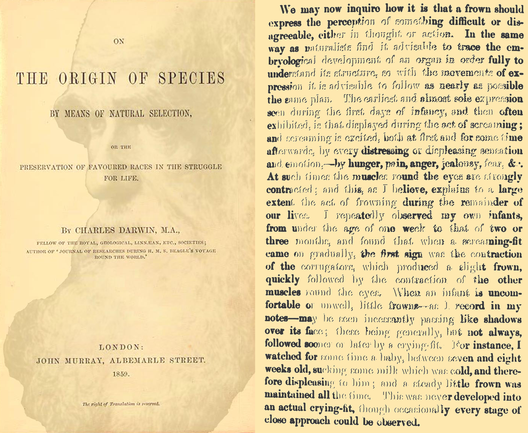Charles Robert Darwin1809–1882
Darwin revolutionized the life sciences with the publication of his theory of evolution in 1859. He had a distinguished scientific ancestry: his grandfather, Erasmus, proposed that all species evolved from a common source, and his father, Robert, was a physician who conducted experiments on the visibility of afterimages. Charles provided the evidence for a mechanism to account for evolution. The theory built upon the fact of variability in all organisms. Some variations can affect the fitness for survival and reproduction, particularly in the event of any environmental changes. Those individuals that are better fitted to new conditions will have a greater chance of producing offspring, a process of natural selection that was not considered to be purposive. “This preservation of favourable individual differences and variations, and the destruction of those which are injurious, I have called Natural Selection, or the Survival of the Fittest.” He pursued the consequences of these ideas to human behaviour, particularly in Descent of Man (1871) and in The Expression of the Emotions in Man and Animals (1872), thus laying the foundation for comparative psychology. In the former he argued that the rudiments of human mental processes are evident in animals, and in the latter he noted the similarity of human facial expressions and gestures to those of animals. He also stressed the universality of emotional expressions in human groups. He spoke highly of Bell’s book on the anatomy of expression, and drew upon it in his own. Darwin’s own books are sparsely illustrated, and then they tend use pictures from other books rather than drawings made specifically for them. The left illustration shows Darwin in the title page of the Origin; on the right he is shown in text describing an expression, frowning, that is often encountered in the portraits and photographs of him, and indeed is evident in the portrait shown. In the text he mentions the observations he made on his own children. He had earlier made a detailed record of his firstborn’s development from a few days to over two years of age, and these were published in the journal Mind in 1877; they implicitly suggest that the development of the individual mirrors the evolution of species. Evolutionary theory transformed biology and it was the motive force in defining a distinct brand of American psychology. Darwin was born in Shrewsbury and had an undistinguished record as a student. He studied medicine at Edinburgh, but found the sight of blood distasteful, and so left to study for the ministry at Cambridge, but spent his time pursuing his interests in botany and zoology. In 1831 Darwin set forth as naturalist on the five year voyage of the survey ship HMS Beagle during which he collected most of the evidence that was to support his theory of evolution. He was reluctant to publish his theory because of the predictable theological controversy it would generate, but he was persuaded to do so after receiving a letter from Alfred Russel Wallace (1823-1913) who had derived a similar theory independently.
